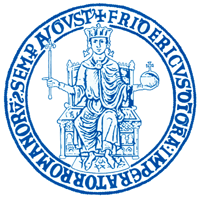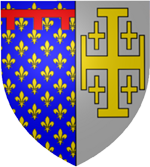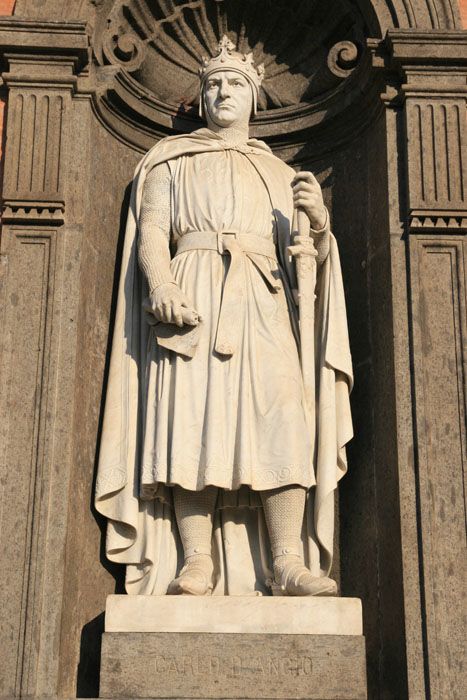
Frederic II Hohenstaufen founded the university in 1224, considering Naples as intellectual capital while Palermo held a political role. This university remained unique in southern Italy for seven centuries.
After the defeat of Frederic’s son, Manfred, in Naples in 1266, the kingdom of Sicily was entrusted by Pope Clement IV to Charles of Anjou, who transferred the capital from Palermo to Naples.
 He made the New Castle (Castel Nuovo) his residence around which the construction of the palaces of the nobles formed a new district.
He made the New Castle (Castel Nuovo) his residence around which the construction of the palaces of the nobles formed a new district.
During his reign new Gothic churches were built, including Santa Chiara, San Lorenzo Maggiore, Santa Maria Donna Regina and the Cathedral.
In 1284, following the revolt of the Sicilian Vespers, the Angevins lost the insular part to the advantage of the Aragonese.
When they were unified, the two Kingdoms were called “Sicily”. On the mainland we began to distinguish “Sicily before the Lighthouse” (Naples) and “Sicily beyond the Lighthouse”, with regard to the lighthouse of Messina; or, “Kingdom of Naples” for the mainland.
The two siciles remained formally separated until 1816, when under one entity they formed the Kingdom of the Two Sicilies.
The kingdom was divided into two halves, but Naples developed considerably; The merchants of Pisa and Genoa were joined by the Tuscan bankers, then by exceptional artists such as Boccaccio, Petrarch and Giotto.


